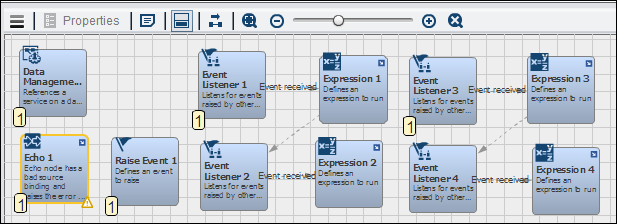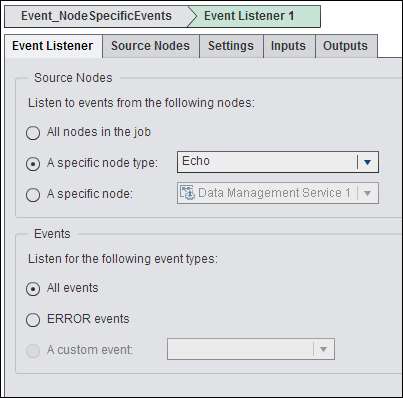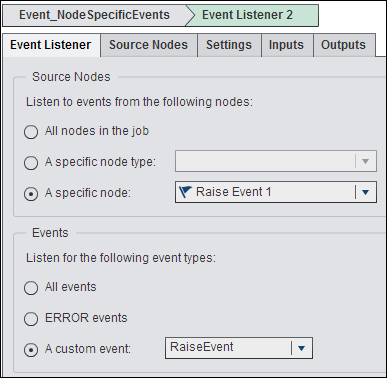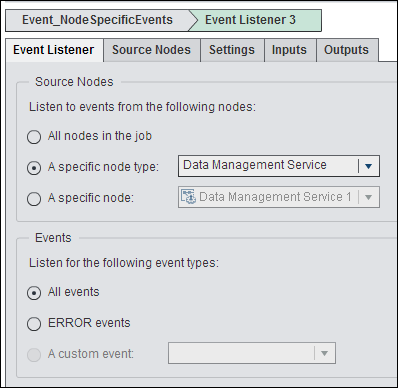Working with the Event Listener Node
Overview of the Event Listener Node
You can add an Event
Listener node to a Flow tab
in an orchestration job to listen for events posted by other nodes.
The listener can catch all events or smaller scopes. These scopes
can be an event type, a job node ID, or node types. When a listener
starts, it sits in the running state and checks for events as the
job executes. When an event that matches the listener completes and
exits on slot one, any node connected to slot one then runs. For multiple
events, the Event Listener node can loop
back in the workflow chain after the event is processed to listen
for another event.
Inputs and Outputs to the Event Listener Node
Using the Event Listener Node
You can create an orchestration
job that uses one or more Event Listener nodes
in the Flow tab to process the events generated
by other nodes in the job. This job also demonstrates how Event
Listener nodes interact with other nodes.
The following display
shows a sample orchestration job that uses four Event
Listener nodes in this way:
Event Node Job with Specific Events

The Event
Listener 1 node listens for events from the Echo node.
For information about Echo nodes, see Working with the Echo Node.
Note that the unique
outputs for each Event Listener node in the sample job serve as the
inputs for the Expression node that follows
it. (These inputs are LAST_SEEN, _NAME, _SOURCE, and _SOURCETYPE.
For example, the unique outputs for the Event Listener
1 node become inputs to the expression in the Expression
1 node that follows it in the job. For information about Expression nodes,
see Working with the Expression Node.
The Event
Listener 2 node listens for events from the Raise
Event node. For information about Raise Event nodes,
see Working with the Raise Event Node.
Finally, The Event
Listener 3 and Event Listener 4 nodes
listen for events from the Data Management Service node.
For information about Data Management Service nodes,
see Working with the Data Management Service Node.
Copyright © SAS Institute Inc. All rights reserved.


